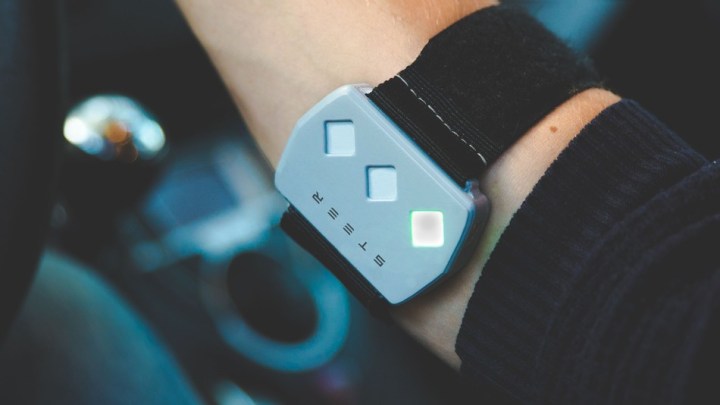
The team has taken this shocking device to Kickstarter to drum up support, and it has already doubled its pledge goal with nearly 100 backers and a week to go in the campaign.
“I and people around me frequently notice that we become very drowsy while driving a long distance,” Vlad Ilyin, founder of Creative Mode who designed the device, told Digital Trends. “I did not take it very seriously until about two years ago, a friend of mine got in a car accident, he crashed into a tree because for a few seconds he fell asleep. Fortunately, he is all right but on that day he broke his collarbone. I investigated this matter further and found out shocking statistics about how dangerous driving drowsy can be. In the end of 2016 I brought up my team together and we started to think how we can prevent accidents and even deaths caused by this.”
Steer uses two different sensors to detect changes in heart rate and sweat secretion, biometrics that signal when someone is getting drowsy. When the device is first put on it records the wearer’s heart rate and skin conductance level. If a wearer’s heart rate lowers by ten beats per minute and skin conductance by one unit from baseline, the device gives a slight vibration. When skin conductance decreases by another unit and heart rate falls by three more beats, Steer delivers a gentle shock.
“We thought of different ways of how to wake up a person, so it’s not too distractive and too irritating,” Ilyin said. “At the first, vibration came to our minds. Then, after a few tests, we found out that in certain situations vibration is not always noticeable and there should be something stronger. The electric shock seemed like a crazy idea at first but, after a few kinds of research, we found that a gentle electric impulse is not harmful and at low amperage, it does not hurt at all.”
The shock is meant increase serotonin, cortisol, and other hormones to keep the driver awake, according to its designers. The hope is then that drivers will pull over and get some much needed sleep rather than powering through trip. Steer will retail for about $230 but it’s available on Kickstarter for under $130.


